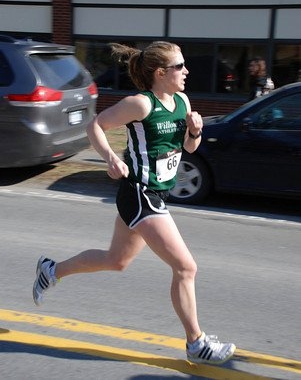SNAPSHOT
No Days Off encompasses awareness, honesty, and devotion.
DIGGING DEEPER
"KEEP YOURSELF HONEST...No Days Off is not a race towards your physical breaking point, but rather a call for moderation – a daily greasing of the groove where today’s run is only as important as what you are able to do tomorrow, and the day after that, and the day after that, and the day after that . . ." Tracksmith
I have fallen in love with the concept of being aware of your body's needs every day. To care for your body and mind with honesty and devotion.
My body does not need to run 365 days a year but it does need to recovery from yesterday and prepare for tomorrow. I strongly suggest for a runner to have days off from running, to give the body rest. It is only during rest that the body can repair itself and prepare for the same feats in the near future.
However, there is also a need for perseverance and devotion in order to strengthen the body and mind. We need to run often in order to increase our abilities. Running most days for an intermediate runner causes the correct amount of adaptions. It is when a runner gets too greedy and doesn't allow for recovery that injury and exhaustion occur.
The fine line between these two zones of recovery and training is where awareness and honesty keep us healthy. Awareness of how much we are asking of the body and the need to rest in order to become stronger keep us from overtraining. An honest look at our weaknesses, and devotion to continue when we don't feel like it, pulls us up to our potential.
When training a runner, I seek to balance to training and recovery. Here is a sample of an average week for an average runner that I coach.
Look at how hard days of running are balanced with easier days. Notice that there are two days of no running but instead, they are replaced with either core strength or active recovery. Every day the runner is progressing toward their potential and yet giving the body and mind the rest that is needed.
Special Note: Please don't use this training schedule next week. This runner has spent many months preparing themselves for this volume and intensity of running. On the other side, don't be afraid of it. This runner was not a runner one year ago.
RECOMMENDATION
I recommend using Tracksmith's No Days Off Desk Calendar or Poster. I am giving them away on my Facebook live video on New Year's Day!
This instrument can help to keep you aware of your devotion through honestly evaluating if you cared for your body that day. If you ran when you needed a run, then mark the calendar. If you performed your yoga or Pilates routine in order to give yourself core strength and active recovery then mark the calendar. On the day you truly needed an hour laying comfortably while reading instead of pounding the pavement then mark the calendar.
The day you don't mark the calendar is when you turned away from your planned training or recovery to eat nachos and feel guilty. There will be the next day when you can accomplish and mark your calendar as a reward for your awareness, honesty, and devotion.
SOLUTION
Every day embark upon becoming stronger through either running or recovering.












